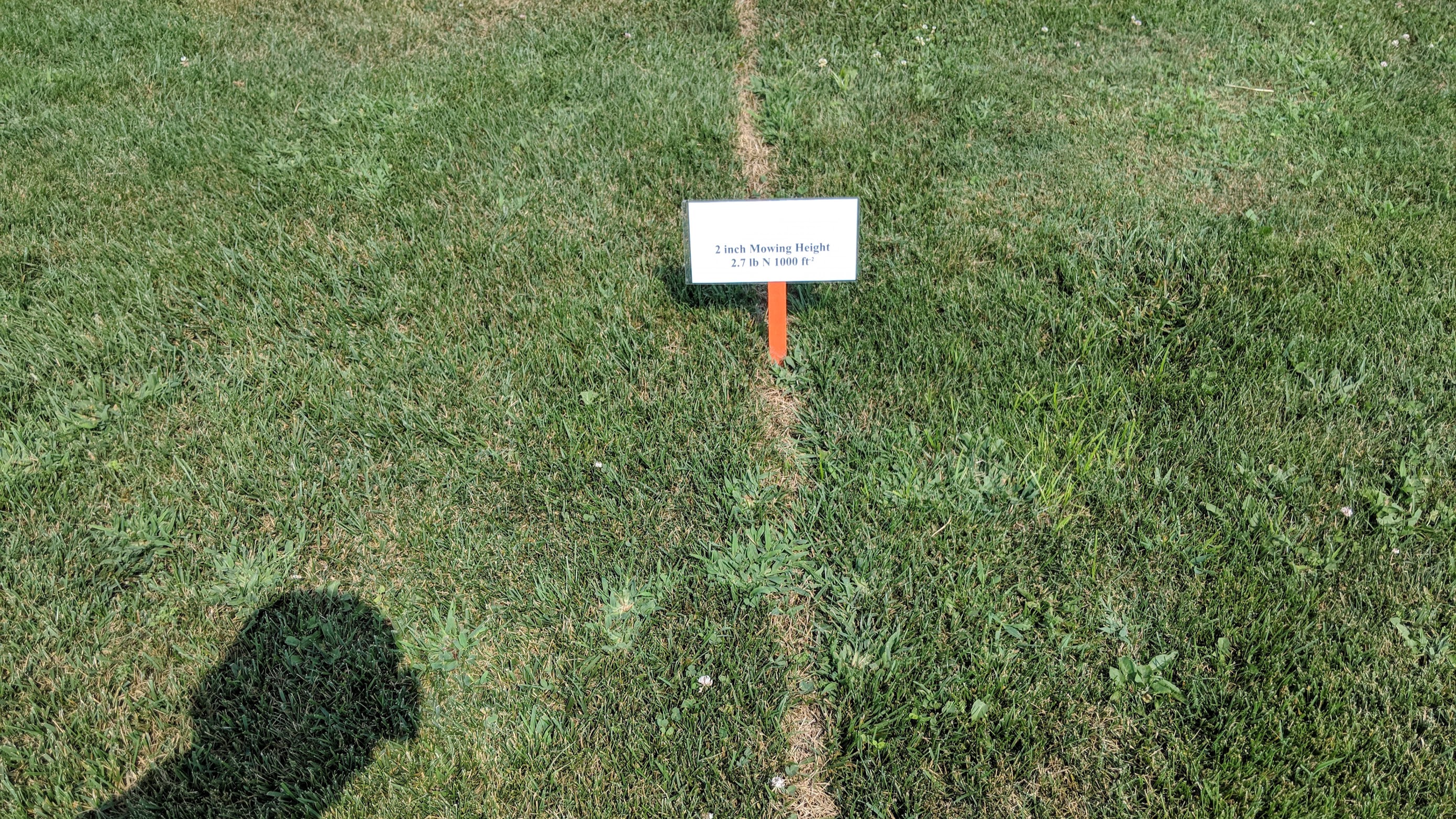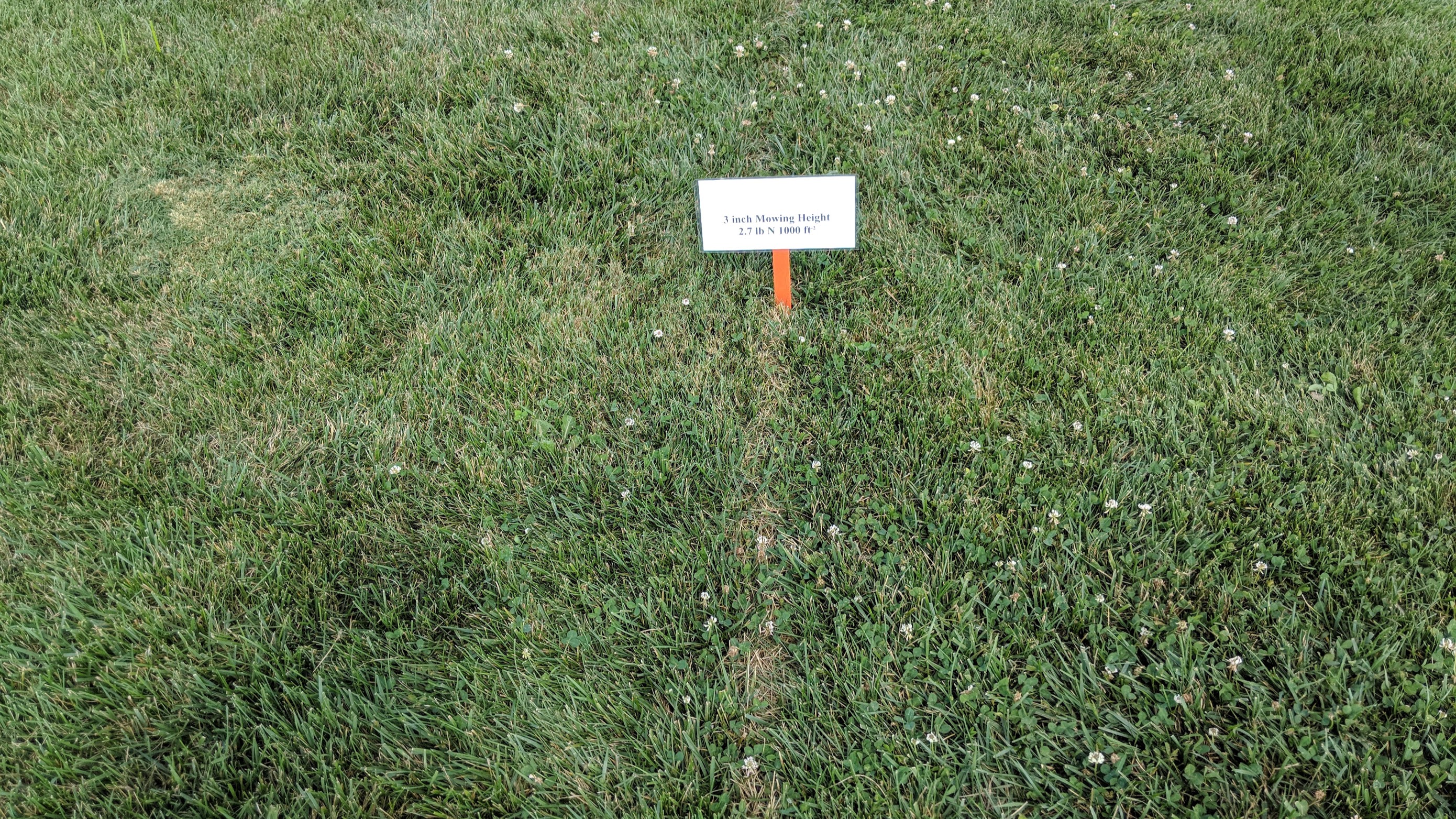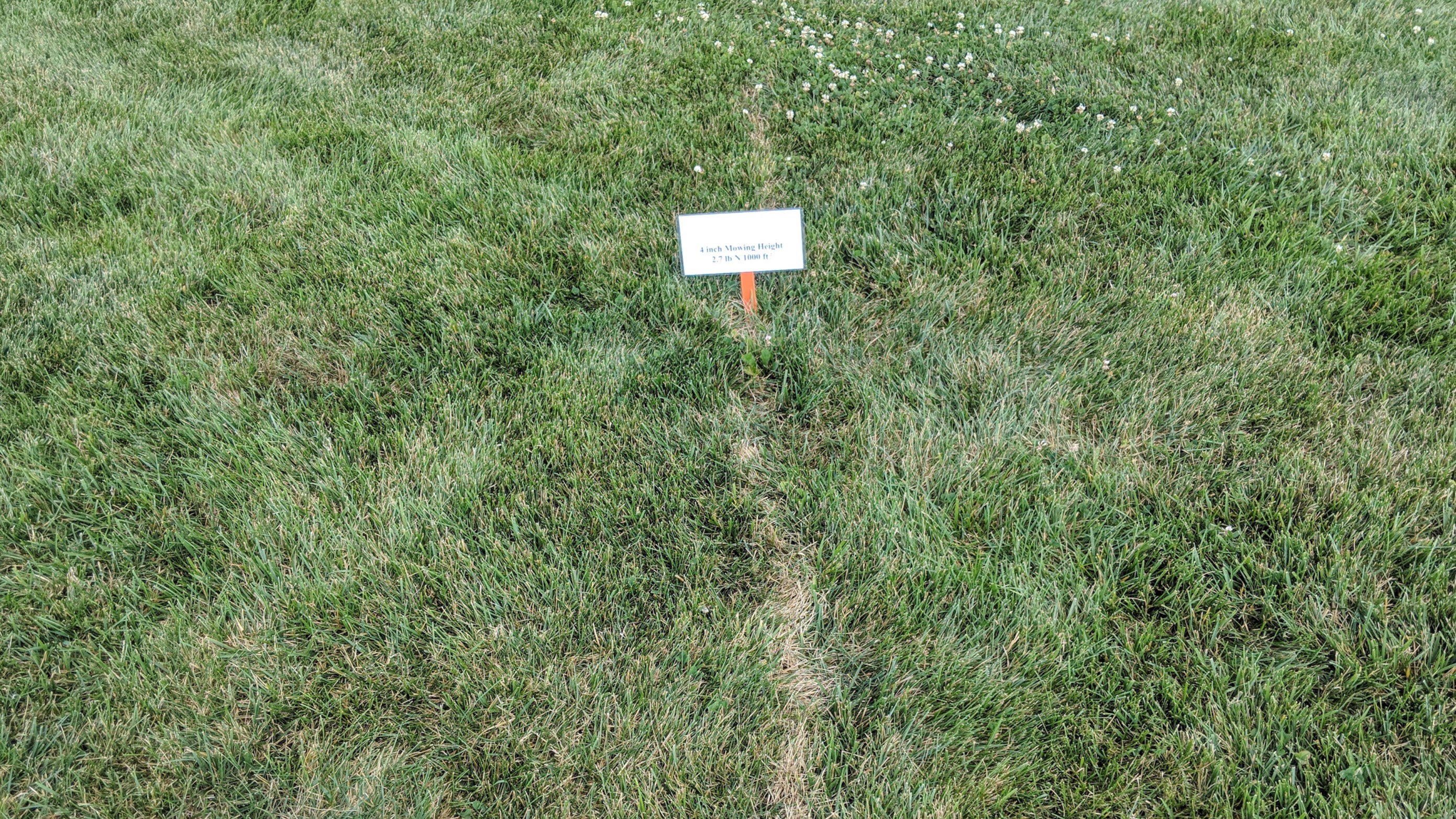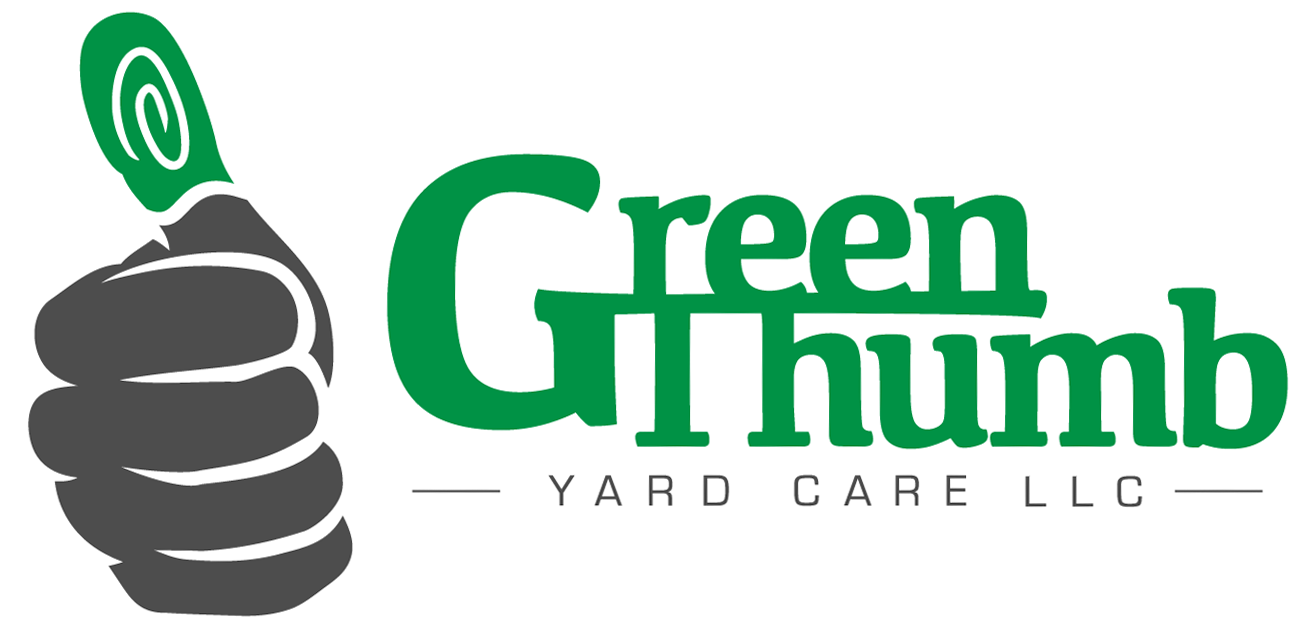Raising Mowing Heights During Summer
Most people set their lawn mower height after purchasing their lawn mower, then they never touch it again. There’s nothing wrong with that. But, since our goal is to educate our customers and provide the highest quality of service, let me show you why “set it and forget it” isn’t the best approach.
In July I attended the annual turfgrass conference at the University of Maryland, College Park. Among many of their short lectures, we reviewed the effect of mowing height on grass health. My favorite part about this talk was the stark difference that anyone can notice between the mowing heights.
The University maintains the tracts of lawn that I will be examining. The grass in the photos is fertilized with 2.7 pounds of nitrogen/1000 sq ft annually. You will notice a strip of brown dead grass running along the area labeled. The lawn on the left side of that stake has been treated for weeds once in 2013. The area to the right of the stake has never been treated for weeds.
The experiment is to demonstrate the advantages of mowing at higher heights. Unfortunately, my visit was during a wet time of the year. Normally the difference in grass health would be even more dramatic during a dry season. Simply put, mowing on a higher setting encourages the grass to develop a deeper root system. When turf has a good root system, it can withstand stress like drought, foot traffic and weed encroachment much better.
Look at the photos and descriptions below to get a better idea why mowing 3″ or higher is so important, especially during stressful periods like the summer.
1″
Grass can be mowed at 1″, but in order to achieve a beautiful lawn at this height, the inputs required are much higher. You will need to regularly water, apply more fungicides, apply more herbicides, and fertilize more frequently. You will also have to mow every 3-5 days to maintain this height.
Most homeowners don’t have the time or money to maintain grass cut at this level.

2″

The grass is able to out compete with the crabgrass seen in the 1″ picture. However, you can still see some crabgrass, dandelion, and clover encroaching in the turf. At this height, the grass is still susceptible to outside stresses. none the less, this grass looks exponentially better than the previous photo.
3″
You can see the deep green color that we typically associate with a healthy lawn. On the right, there is a clover infestation, but keep in mind that this portion of the grass has NEVER been treated with herbicides. On the left, where just one herbicide treatment was made in 2013, you see almost no clover.
This is a very healthy lawn that would require very little extra inputs. Aside from irrigation on hot summer days, this lawn will remain green and healthy with minimal care. In the spring and fall, when temperatures are more mild, we mow around 3″.

4″

But, keep in mind that this particular tract of lawn will have a deeper, more robust root system. In the heat of summer, this lawn will be able to endure dryer conditions for longer. This is the exact reason that we raise our mowing heights in the summer. Our goal is to provide our customers with the healthiest lawn we can. If you want to achieve a healthy lawn, you should consider raising your mowing heights in the summer too!
